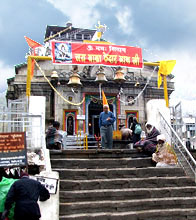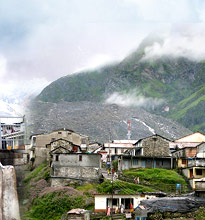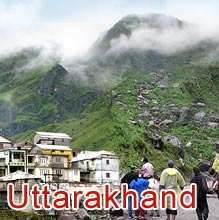Uttarakhand literally means Northern Section. Earlier it was a part of the state of Uttar Pradesh but now it is an independent state. Uttarakhand also has the sobriquet of ‘The Land of Gods’ and ‘The Heavenly Abode’. Uttarakhand has long history going back to ancient times.
Rulers & Etymology
The state of Uttarakhand has been mentioned in the Vedas, Upanishads and religious texts like Ramayana and Mahabharata albeit with different names. For Valmiki it was Uttarkaushal and Uttarkuru for Ved Vyasa; scholars like Panini and Kautilya called the region Uattarapatti; and Parvatkaran and Giryavali for the ancient historians. All these names have one thing in common; almost every name is related to the Himalayan Mountains. The Pauravas, Kushanas, Kunindas, Guptas, Katyuris, Palas, the Chands, and Parmars or Panwars and the British have ruled Uttarakhand in connected successions.
Ancient History
The region was originally settled by the Kols, an aboriginal Dravidian tribe, who were later joined by Indo-Aryan Khas tribes that arrived from the northwest region of India and beyond in the Vedic period. But traces of human existence have been found in the Kumaon region belonging to Mesolithic Age like the paintings of Lakhu Udyar. By 8th century, Adi Shankaracharya had made inroads here and reestablished some extremely sacred Hindu shrines like Badrinath and Kedarnath.
Medieval History
By the medieval period, the region was consolidated under the Garhwal Kingdom in the west and the Kumaon Kingdom in the east. From the 13th-18th century, Kumaon prospered under the Chand Rajas who had their origins in the plains of India. During this period, learning and new forms of painting (the Pahari School of art) developed. In 15th century King Ajay Pal of Pala Dynasty unified the 52 principalities of Uttarakhand that one common history could be made out. The city of Srinagar (of Uttaranchal) remained the capital till an earthquake completely and irreversibly damaged it and thus cities like Dehradun, Nainital and Pauri were developed as alternatives.
Contemporary History
Post independence, Tehri was merged into then Uttar Pradesh but various political parties like the Uttarakhand Kranti Dal demanded a separate state 1994 onwards. Finally in 1998 after a lot of controversies and agitations, Uttar Pradesh was bifurcated into Uttar Pradesh and Uttarakhand. Initially, the state was called by the name of Uttaranchal but in December 2006 it was finally settled as Uttarakhand.










